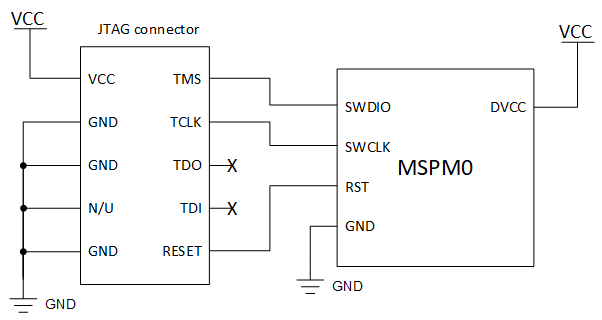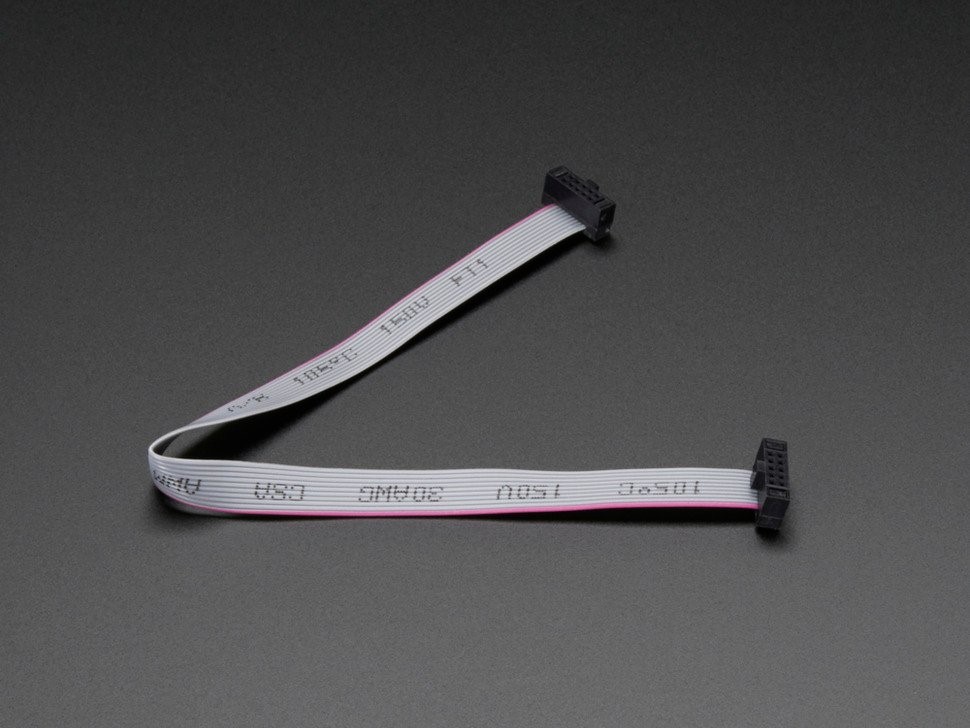SLAAE76B march 2023 – june 2023 MSPM0G1105 , MSPM0G1106 , MSPM0G1107 , MSPM0G1505 , MSPM0G1506 , MSPM0G1507 , MSPM0G3105 , MSPM0G3106 , MSPM0G3107 , MSPM0G3505 , MSPM0G3506 , MSPM0G3507
5.2 Debug Port Connection With Standard JTAG Connector
The Figure 5-3 shows the connection between MSPM0G family MCU SWD debug port with the standard JTAG connector.
 Figure 5-3 JTAG and MSPM0G Connection
Figure 5-3 JTAG and MSPM0G ConnectionFor MSPM0G device, you can use XDS110 to implement debug/download function. Here list the contents of the XDS110 and provides instruction on installing the hardware.
Standard XDS110
You can purchase a standard XDS110 on ti.com. Figure 5-4 shows a high-level diagram of the major functional areas and interfaces of the XDS110 probe.
 Figure 5-4 XDS110 Probe High-Level Block Diagram
Figure 5-4 XDS110 Probe High-Level Block DiagramMore standard XDS110 information, refer to the XDS110 Debug Probe User’s Guide.
Lite XDS110 (MSPM0 LaunchPad Development Kit)
The MSPM0 LaunchPad kit include XDS110-ET (Lite) circuit. You can use this debugger to download your firmware into MSPM0 device. Figure 5-5 shows XDS110-ET circuit.
There are two probes in XDS110-ET:
2.54-mm probe: This port supports the SWD protocol and includes a 5-V or 3.3-V power supply. You can connect SWDIO SWCLK 3V3 GND to your board and download firmware into an MSPM0G device.
And this probe also supports EnergyTrace technology to measure power consumption precisely in real time.
More information for EnergyTrace technology, visit the EnergyTrace Technology tool page.
 Figure 5-5 XDS110-ET Circuit
Figure 5-5 XDS110-ET Circuit10-pin probe: This port supports the JTAG and SWD protocols and includes a 3.3-V power supply. You can use a 10-pin cable to connect your board and XDS110-ET and download firmware into an MSPM0G device. Figure 5-6 show the 10-pin cable.
 Figure 5-6 Arm Standard 10-Pin Cable
Figure 5-6 Arm Standard 10-Pin Cable- Standard XDS110 support level shift for debug ports, XDS110-ET just support 3.3v probe level.
- We do not recommend using the XDS110 to power other devices except the MSPM0G MCU because the XDS110 integrates an LDO with limited current drive capability.
- XDS110-ET 2.54-mm probe does not support JTAG protocol.
- XDS110-ET 10-pin probe does not support EnergyTrace technology.